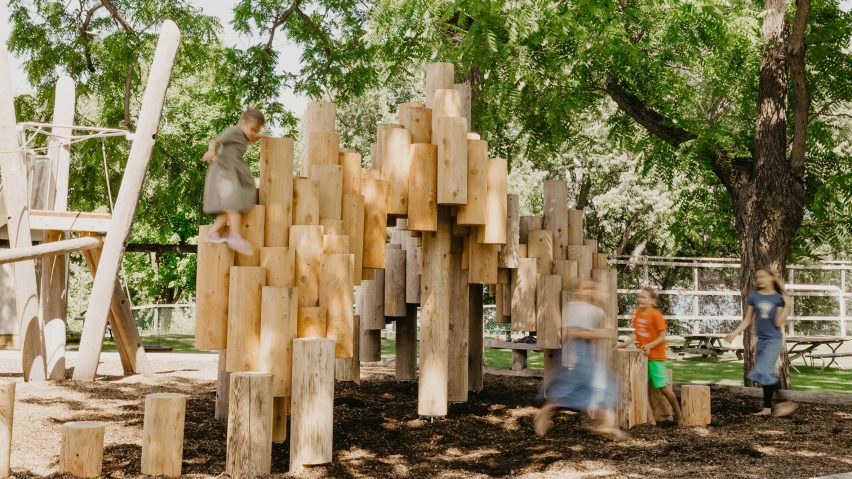
Kengo Kuma and Earthscape create "wooden mountain" playground structure
Japanese studio Kengo Kuma and Associates has teamed up with Canadian playground design company Earthscape to create a playground structure made of interconnected logs.
Named Moku-Yama, which translates to "wooden mountain" in Japanese, the structure is made of clusters of "sustainable" timber logs grouped together vertically to form interactive peaks and valleys.
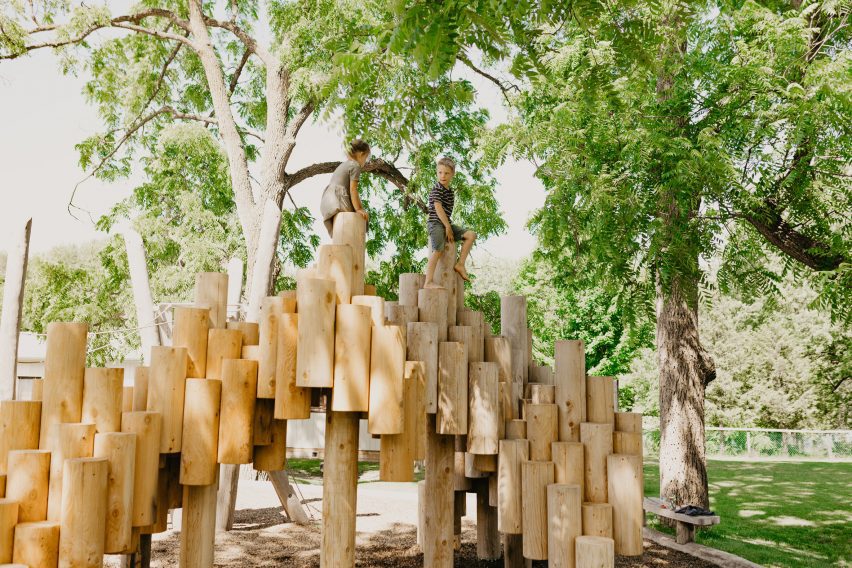
"Moku-Yama blurs the lines between art and play," said the team. "It is an open-ended and non-prescriptive form that enables a multitude of individual and social play experiences."
"From climbing to perching; from drop jumping to hiding; it affords play over, under, and around the structure."
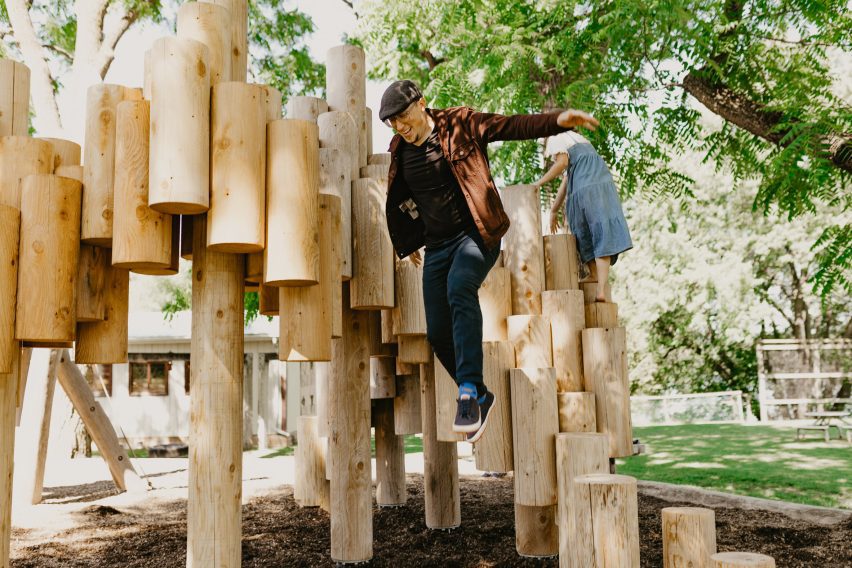
Kengo Kuma and Associates (KKAA) and Earthscape collaborated to produce the structure in three different sizes, with each module formed by a different arrangement of logs that reach ten feet (3 metres) tall at the maximum peak.
The smallest has a footprint of 22 feet by 30 feet (6 metres by 9 metres), with a single peak, while the largest spans 35 feet (11 metres) and contains undulating "pods" of logs.
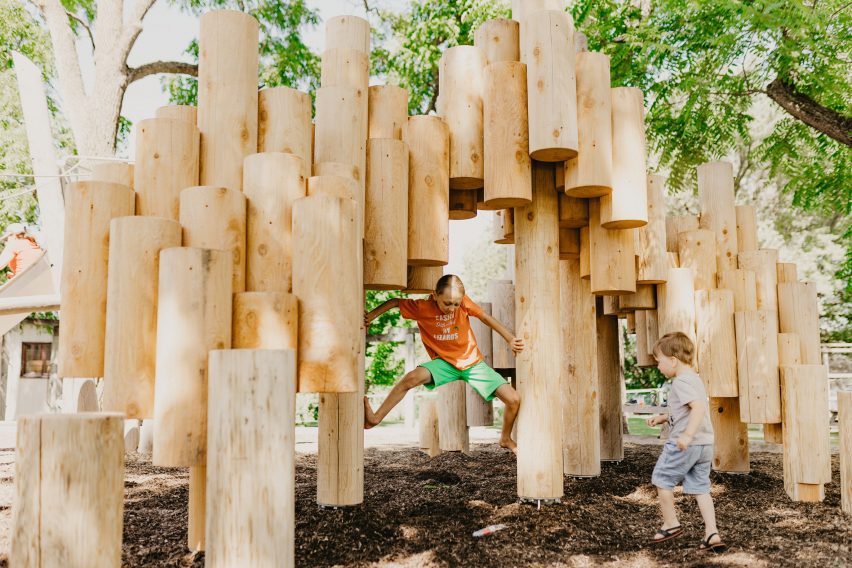
Each structure is supported by several structural posts, with groups of logs affixed to them to create varying levels.
The tops of the logs can be traversed by foot, while the space underneath resembles wooden stalactites and is also intended for play.
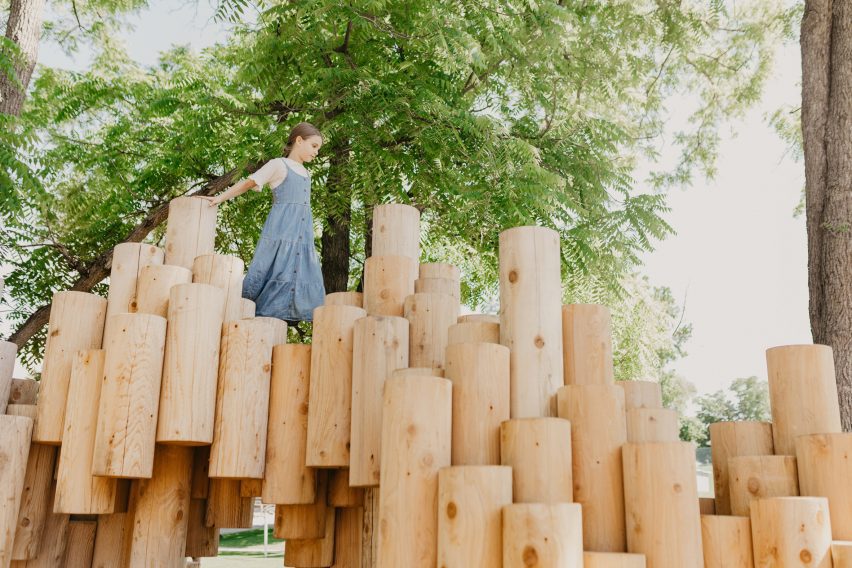
Towards the edge of the structure, individual logs planted in the ground create access points to the centre.
"The repetition of the cylindrical logs contrasts with the irregular and non-symmetrical overall shape," said the team. "Moku-Yama logs appear to float and the near-invisible construction adds to the sense of awe when it is experienced from every angle."
Turned Alaskan yellow cedar was used for the design and according to the team, will not be stained to showcase the natural wood.
Moku-Yama was specifically designed for children, although "the architectural aesthetic will also captivate teens and adults who oftentimes feel excluded from play and public spaces," said the team.
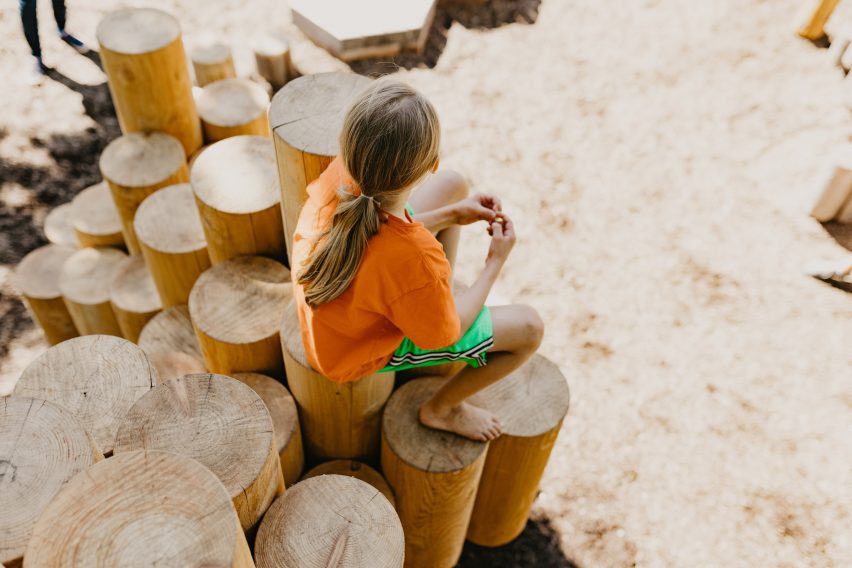
"The distinction between playgrounds and architecture is less obvious than one might think," said KKAA partner Balázs Bognar.
"We engage projects based on their contribution to society, not necessarily on size, prestige, or profit. Cultural impact is the foremost factor that gets us excited. Playgrounds are architecture, at children's scale."
The model was set up in Ontario but can be purchased internationally.
KKAA recently created washi paper and tree bark accessories for Fendi and a staggered housing complex on a Japanese hillside that one Dezeen commenter found "unsettling".
Recently, Dezeen rounded up a series of innovative playground structures built around the world including a playground built around a former warehouse in China.
The photography is courtesy of Earthscape.